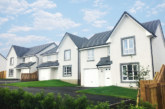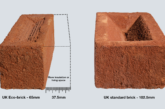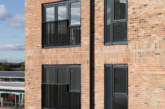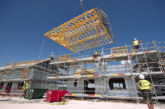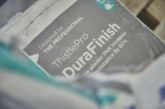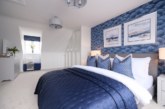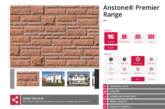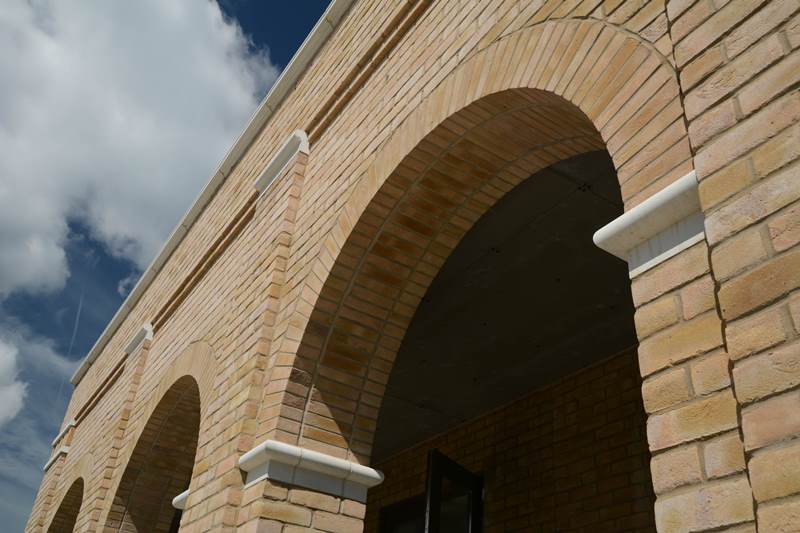
Kate Royce, Director of Sales for Major Developers at Ibstock Brick, talks to Professional Housebuilder & Property Developer about how brick can be used to bring a sense of individuality to housing projects.
For centuries, brick has provided the traditional choice for cladding houses across the country. But recently it has been undergoing a renaissance. Throughout the supply chain there is a sense of a reinvigorated aesthetic appreciation of traditional building materials. And brick is at the very heart of this.
Its ability to move with the times and embrace changing trends and styles is what makes it the material of choice. Its adaptability means housing designs can range from the ‘sympathetic’ to the ‘imaginative’; thus, meeting the more creative design aspirations of architects, housebuilders, property developers and most importantly, homeowners.
“Among the most popular styles is the use of linear bricks for dramatic and elongated effect”
Architectural awards are a great showcase for what can be achieved. Not only are they a testament to bricks credentials but these projects provide a benchmark for future housing concepts.
As an example, Barratts Grove by Groupwork + Amin Taha – a finalist for last year’s RIBA Stirling Prize, created a real buzz around innovative brickwork, where it was used to create a stunning ‘hit and miss’ or perforated façade. Whilst it was a one-off project, its design appeal to the wider audience will eventually filter down the supply chain to both commercial and housing projects alike.
Modern aesthetics
With a wide range of shapes, colours and finishes available housebuilders and developers have the opportunity to create distinguishing designs – from the traditional to the contemporary – using brick.
Among the most popular styles is the use of linear bricks for dramatic and elongated effect. These long, narrow bricks allow housebuilders to create distinctive, yet elegant, exteriors which retain their longevity and traditional feel. Its use is becoming more widespread, particularly on developments where the housebuilder is looking for a more contemporary design, as it enhances the building’s aesthetics and accentuates the linearity of the façade.
There is also a nationwide trend towards a more classic look in housing. This is being achieved using brickwork detailing, and its popularity is rising as the general public can relate to it – the overall finish is how they ‘expect’ a house to look.
Detailing techniques include underslung soffits which are deployed to complement the use of colour, texture and finish across the building envelope. Nexus, our own next generation of lightweight brick-faced soffit units has been developed through a collaboration between Ibstock Kevington and Ancon Building Products. This BBA Certified, fully adjustable, prefabricated soffit solution allows architects and constructors to add an extra depth and dimension to their masonry façade designs.
Arches are also a popular decorative and practical feature; it is a distinguishing characteristic which can be used to complement new brickwork or to match in with existing brickwork in refurbishment and renovation schemes.
Colourful thinking
Some of the strongest opportunities for innovative brickwork come from using a wider colour palette, and the specification of bolder colours is encouraging a new approach to the design of homes across the country. By using colour, housebuilders can add depth and distinction by creating differentiation between two buildings or parts of the façade.
An emerging trend from the Northern parts of mainland Europe is the specification of grey brickwork; and use of blue bricks is following suit. It is easy to see why as they offer an exciting alternative to the traditional brick spectrum. This movement has been years in the making, but design commentators predict that this shift in colour choice will continue to gain momentum.
An inspiring example of how colour can be used is a recent residential development project in Beak Street in Soho, London. The design integrates a stunning rational brick frame with stone spandrels, animated with vertical bands featuring ‘woven’ green tiles that pay tribute to the area’s textile history and also relate to the glazed tiles which define the surrounding streets.
Brickwork that resonates with its environment whilst creating an aesthetically pleasing finish offers the ultimate kerb appeal. And with many homeowners – the end users in the supply chain – now looking to achieve this, housebuilders and developers have a wide range of options available that retains familiarity whilst stepping away from the norm.


